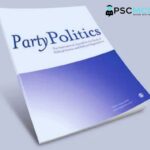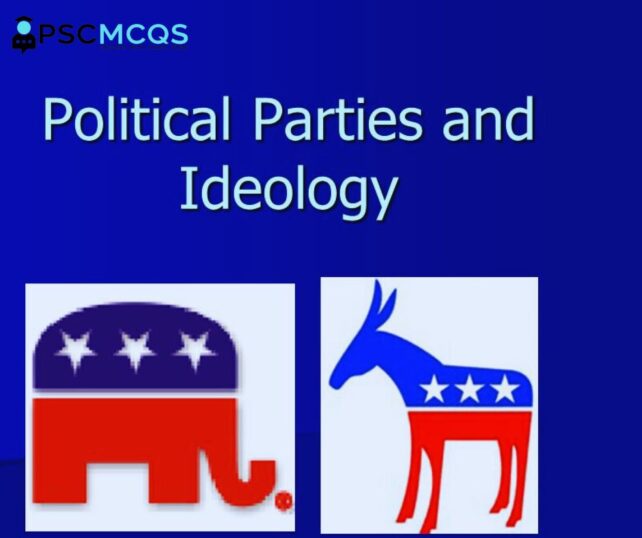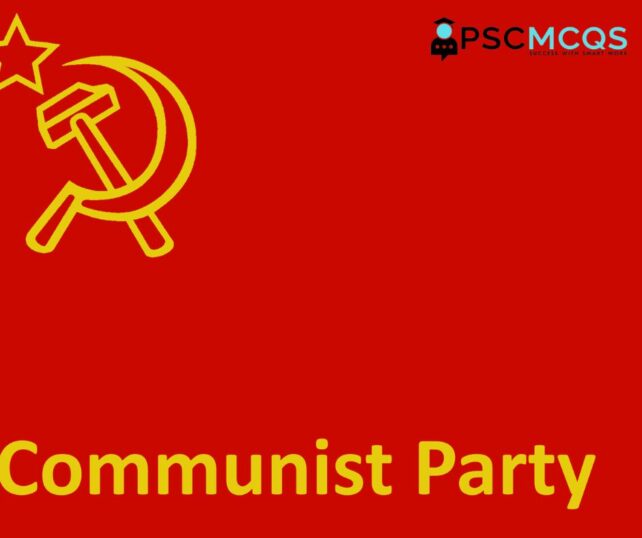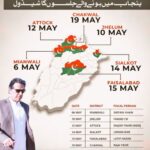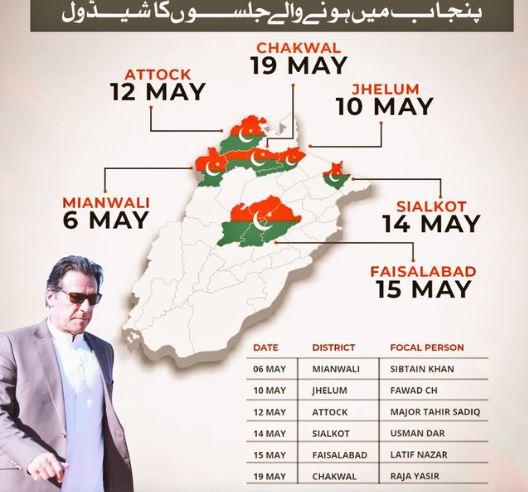Muslims Rule in India
Muslims Rule in India
We are living in a world of power. Everybody out there wants to be more powerful. The power can be in the form of land, economy, or influence. From the start of this world, people fought with each other for power. History tells us the story of every king who fought for power.
Muslim rule in the Indian subcontinent began with the gradual attacks of Muslims on Hindus. They attacked several times, and the major attacks which had to straighten the way to their rule are the Sindh and Multan.
The rule of Sultan Muhammad Ghori is credited to be the foundation and supporting pillar of Muslim rule in India.
From the 12th century onward, the Turko-Mongol Muslims started to expand their empires to the Sub-continent such as Delhi Sultanate and Mughal India.
Muslims’ invasion of India left a remarkable impact on the Indian People. They faced cultural, social, economical, and religious change. Many of the changes were so observant that it used to look like something has been equally established as new. We will be discussing the impacts of the Arab/Muslim invasions of India later in this article.
Let’s dig deep into the history of early Muslims who tried to invade India.
Pre-Islamic India
In The Religion of the Rig Veda, Maurice Bloomfield strangely claims that “Indian religion originates before arrival in India.” By saying this, he is suggesting that the religion of India is a continuation of the ancient faith of the Indo-European race, to whom the Aryans who arrived in India belonged.
The Persian God Mithra is the equivalent of the Vedic God Mitra, and the Sanskrit word deva (to shine) for God is akin to the Latin word Deus. Yaj, a Sanskrit word for adoration, is used in many Indo-European languages.
The basis of their religion was an animistic belief in a very large number of petty gods, each of which had a specific function, as evidenced by a comparison of the beliefs and practices of the Teutonic, Hellenic, Celtic, Slavonic, Italian, Armenian, and Persian peoples, whom all descended from the Indo-European race.
They were worshipped through sacrifice, together with prayers and potent spells. Magic was highly valued and frequently employed.
It is exceedingly regrettable that neither official history nor archaeological evidence exists to shed light on this ancient race’s early abode or the period when the great historical people split out from it. In addition to the Epics and the Puranas, the Vedas are our main source for the history, religion, and philosophy of the Indian branch.
Arab Invasions in Detail
The invasion of India began in the 8th century as part of the Umayyad Caliphate’s expansion policy. In 712 CE, Arabs led by Muhammad bin Qasim, a general of the Umayyad Caliphate, invaded India from the northwest region (Sindh). Muhammad bin Qasim led the Arab conquest of Sindh.
- Changes in Religion: Islam was established in Sind and Multan. The attempt failed because the Rajputs held a strong position in the north. Initially, the Khalifah was shaken by Muhammad bin Qasim’s death, and Islamic propagation was slowed.
- When Muhammad bin Qasim conquered Sindh, he categorized Hindus as Zimmis because he thought it was inappropriate to convert all Hindus to Islam or even kill them for refusing to convert.
The advent of Islam in the Sub-Continent
The last Prophet of Islam, Prophet Muhammad (SAW), completely changed the intellectual outlook of Arabia. Within 23 years, he transformed the barbarous and impious Arabs into a civilized and religious nation. During his life and also after his death, Muslims took the message of Islam to every corner of the world and within a few years, Muslims became the superpower of the era.
Trade relations between Arabia and the Sub-continent date back to ancient times. Long before the advent of Islam in Arabia, the Arabs used to visit the coast of Southern India, which then provided the link between the ports of South and South East Asia. After the Arab traders became Muslim, they brought Islam to South Asia. Many local Indians living in the coastal areas embraced Islam. However, it was the Muslim conquests in Persia, including the provinces of Kirman and Makran, which brought the Arabs face to face with the then-ruler of Sindh.
During the reign of the great Umayyad Caliph Walid bin Abdul Malik, Hajjaj bin Yousaf was appointed as the governor of the Eastern Provinces. At that time, Raja Dahir, a Brahman, ruled Sindh.
During those times, some Muslim traders living in Ceylon died and the ruler of Ceylon sent their widows and orphans back to Baghdad. They made their journey by sea. The King of Ceylon also sent many valuable presents for Walid and Hajjaj. As the eight-ship caravan passed by the seaport of Daibul, Sindhi pirates looted it and took the women and children prisoner. When news of this attack reached Hajjaj, he demanded that Dahir return the Muslim captives and the looted items. He also demanded that the culprits be punished. Dahir replied that he had no control over the pirates and was, therefore, powerless to rebuke them. On this Hajjaj decided to invade Sindh. Two small expeditions sent by him failed to accomplish their goal. Thus, to free the prisoners and to punish the guilty party, Hajjaj decided to undertake a huge offensive against Dahir, who was patronizing the pirates.
In 712, Hajjaj sent 6,000 select Syrian and Iraqi soldiers, a camel corps of equal strength, and a baggage train of 3,000 camels to Sindh under the command of his nephew and son-in-law, Imad-ud-din Muhammad bin Qasim, a young boy of just seventeen years.
Muhammad bin Qasim first captured Diablo. He then turned towards Nirun, near modern Hyderabad, where he easily overwhelmed the inhabitants. Dahir decided to oppose the Arabs at Razor. After a fierce struggle, Dahir was overpowered and killed. Razor fell into the hands of the Muslims. The Arab forces then occupied Alor and proceeded toward Multan. Along the way, the Sikka (Uch) fortress, situated on the bank of the Ravi, was also occupied. The Hindu ruler of Multan offered resistance for two months after which the Hindus were overpowered and defeated. Before this, Muhammad bin Qasim had taken Brahmanabad and a few other important towns of Sindh.
When Muhammad bin Qasim conquered Sindh, the local people, who had been living a life of misery, breathed a sigh of relief. Qasim followed a lenient policy and treated the local population generously. Everyone had full religious freedom and even the spiritual leaders of local religions were given salaries from the government fund. No changes were made in the local administration and local people were allowed to hold offices – particularly in the revenue department. All taxes were abolished and Jazia was imposed. Everyone was treated equally. Poor people, especially Buddhists, were very impressed by his policies and many of them embraced Islam. Several Mosques and Madrasas were constructed in important towns. In a short time, Sindh became a center of Islamic learning. Several religious scholars, writers, and poets emerged and they spread their knowledge. The Muslims learned Indian sciences like medicine, astronomy, and mathematics. Sanskrit books on various subjects were translated into Arabic.
SULTAN MUHAMMAD GHORI
After a break of 150 years, Muhammad of Ghur, a Turkish monarch of a tiny Afghan state, launched an invasion of the Indian subcontinent in AD 1175. He went under the name Muhammad GHORI. Turko-Afghan authority in India was founded as a result of the invasion. He took Multan, Peshawar, Sialkot, and Punjab for himself. Five Rajput kingdoms were invaded by Muhammad GHORI:
- The Rathore of Kanuaj
- The Chauhans of Delhi and Ajmer
- The Solankis of Gujarat
- The Parmaras of Malwar
- The Chandellas of Bundlekhand
DELHI SULTANATE
The Persian-speaking Turkic and Afghan dynasty known as the Delhi Sultanate ruled India from 1210 to 1526. Numerous of these kingdoms were based in Delhi. Here are the dynasties:
- Mamluk dynasty ( 1206 – 1290 )
- Khilji dynasty ( 1290 – 1320 )
- Tughlaq dynasty ( 1320 – 1413 )
- Sayyid dynasty ( 1413 – 1451 )
- Lodi dynasty ( 1451 – 1526 )
The rise of the Delhi Sultanate
The first sultan of Delhi was QUTB-UD-DIN AIBEK, a former slave, and his dynasty subsequently conquered most of northern India. The KHILJI dynasty also succeeded in capturing the majority of central India. To destroy the Mughal Empire, the sultanate adopted many actions. The Delhi Sultanate was the first and only kingdom in which women were in charge, under Razia Sultan (1236 – 1240).
DYNASTIES:
MAMLUK DYNASTY
Qutbud-Din-Aibak, a Turkic MAMLUK slave commander of the Ghurid Empire from Central Asia, established the MAMLUK dynasty in northern India. A powerful military elite made up of former slaves who became Muslims was known as the MAMLUK dynasty. One of the earliest dynasties to rule the Delhi Sultanate was this one.
KHILJI DYNASTY
Jalal-ud-din-Khalji established the KHILJI dynasty and reigned from 1290 until 1296. The MAMLUK dynasty, which included early Turkish emperors Qutbud-din-Aibak, Shamsudin Iltutmish, Razia, and Ghiyasuddin Balban, was replaced by the KHILJI dynasty. It gained control in a revolt that saw Afghans gain control of the Turkic nobility’ monopoly on authority.
TUGHLAQ DYNASTY
Ghiyas-ud-din The Tughlaq dynasty was founded by Tughlaq, also known as Ghazi Malik. The treatment of Mongols was terrible under Tughlaq. He murdered Ilkan Oljeitu envoys and cruelly treated Mongol prisoners. Tughlaqabad Fort building was also started by him. 1413 marked the end of the dynasty.
SAYYID DYNASTY
With four kings in charge from 1414 to 1451, the Sayyid dynasty was the fourth to reign the Delhi Sultanate. They replaced the Tughlaq dynasty and governed the sultanate until they were ousted by the LODHI dynasty. KHIZR Khan, a previous ruler of Multan, founded them.
LODI DYNASTY
From 1451 to 1526, the LODHI dynasty, an afghan dynasty, governed the DELHI sultanate. When BAHLUL khan Lodi took over from the Sayyid dynasty, he established the fifth and last dynasty of the Delhi Sultanate. The Sharqi dynasty, situated in Jaunpur, was overthrown and captured by Sultan Bahlul Lodhi in 1479. Bahlul made significant efforts to put a halt to uprisings and rebellions in his realms while expanding his control over Gwalior, Jaunpur, and upper Uttar Pradesh.
Mughal Empire
Between 1526 and 1707, the Mughal Empire dominated the majority of the Indian Subcontinent. When the Turco-Mongol commander Babur defeated Ibrahim Lodi, the last Pashtun emperor of the Delhi sultanate, during the first battle of Panipat in 1526, he established the empire. The six major Mughal Empires were led by Babur, Humayun, Akbar, Jahangir, Shah Jahan, and Aurangzeb. The name “Mughal” is the Persian equivalent of “Mongol.”
Effects of Arab Expeditions
Introduction
After Muhammad Bin Qasim came to Sindh and conquered Sindh. A gate opened for Arabs and Islam in Subcontinent (India). It began a new era in the sub-continent. Arabs and Islam influenced the sub-continent a lot. Here we are going to discuss that influence in detail.
Impacts
Settlement of Arabs
Many Arab soldiers married Sindhi women and settled in Sindh. The region’s population increased as a result.
The Arabs began to regard Sind as their own and attempted to develop it in all aspects.
Good city planning and construction had a significant impact on Indian culture, which was reflected later on.
They believed in the development of new languages, which gave birth to the Sindhi language (a mixture of Arab and Sanskrit language languages poetry is still popular today. It has given birth to a plethora of famous poets. The great Quran has been translated into Arabian.
The flourishing of Trade
Although Arabs used to trade in the subcontinent in the era when it was Hindu rule in the subcontinent. But after conquering Sindh and establishing Muslim rule in the sub-continent it increased trade. It starts Arabs to trade in the sub-continent in their manner. This increased trade in the sub-continent.
Future Islamic Conquest
Muhammad Bin Qasim’s conquest of Sindh opened a door for Arabs to conquer the sub-continent. This was the first time Arabs came sub-continent as rulers. They started conquering other parts of the sub-continent. The Khalifah was shaken by Muhammad bin Qasim’s death, and Islamic propagation was slowed. Muhammad Bin Qasim’s alliances proved fruitful in later invasions of Islamic rulers. This established Arab rule in Sub-continent.
Preaching of Islam
Islam started spreading here in Sindh in the sub-continent. Arabs’ behavior towards local people was so good and it impressed them and they started accepting Islam. Muslim behavior impressed them too much and it is said that after Muhammad Bin Qasim local Hindus made an idol of Muhammad and use to worship that idol. As there was no concept of a caste system in Islam this impressed lower-level people of India and they started converting to Islam. Sind and Multan were the first to embrace Islam. The attempt failed in the north because the Rajputs held a strong position in the north. Because Arabs were not cruel, people’s attitudes toward Islam shifted. No additional taxes were levied on Hindus for practicing Hinduism, which won their hearts and won them over to the Arabs.
Political and Social Effects
The poor management of the Hindu rulers, as well as their weak army forces, were exposed to the world and it provoked the interest of Arabs in occupying all of India. The Arabs paved the way for communication with other Islamic regions, and thus direct trade and commerce with Islamic countries began. Sindh which was considered tribal before the Arab invasion became economically strong and civilized. The Arabs’ law and order changed the region’s social status. The Arabs were excellent politicians. Rather than capturing land, they believed in winning people’s hearts. During this time, social reforms took place as peaceful administration was established, whereas other parts of India were highly disturbed. The disunity of Hindu Rajas proved to be the biggest cause that brought a change in the area. The common people were fed up with internal clashes and had little regard for the Rajput empire.
Language and Knowledge Exchange
They believed in the development of new languages, which gave birth to the Sindhi language in Sindh (a mixture of Arab and Sanskrit languages). Arabs came to the Subcontinent along with Persian and Arabic languages. This diluted Sanskrit in the subcontinent. There also was an exchange of languages. Many Sanskrit words were incorporated into Arab dictionaries. As Hindus were advanced in the knowledge of Astrology. Arabs adopted the rich rituals of the Brahmins and gained knowledge in Astrology, Medicine, and Arthashastra. Books were also translated from Sanskrit to Arabic language and from Arabic to Sanskrit. There was an exchange of Knowledge as well.
End of Hindu Shahi Kingdom
During the campaigns of Mahmud Ghazni, he conquered India. In one of his campaigns when he attacked Punjab in 1026AD and in that attack he captured Lahore capital of the Hindu Shahi kingdom. This was the end of the Hindu Shahi kingdom.
Economic and Cultural Effects
Horses and camels were brought from other areas for trade, and they eventually became a means of transporting goods from Sind to other countries. Arabs brought new models of taxation according to Islamic teachings. And bring justice to the subcontinent everyone should be equal. As we know that there was a caste system in Hinduism, but after the Arabs came they brought justice and equality to the subcontinent.
Conclusion
The Arab invasion was a significant historical event that resulted in social and economic development in the tribal region of India. Law and order were established everyone was equal. Peace and culture were created. Education was widely distributed equally. Trade with Arab countries was established. Sind’s people adopted Islamic culture. Their perception that Islam only believes in cruelty shifted, and Islam spread. The Brahmins were respected, and they were free to practice Hinduism.

